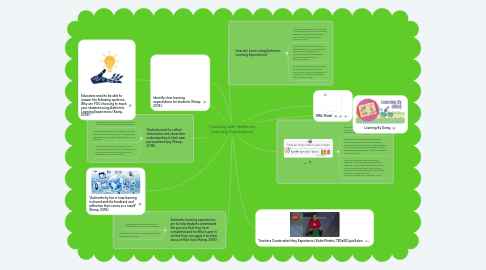Teaching with Authentic Learning Experiences
by Heather Ball

1. Educators need to be able to answer the following quetions, Why are YOU choosing to teach your students using Authentic Learning Experiences (Kemp, 2018)?
2. Identify clear learning expectations for students (Kemp, 2018).
3. Students need to collect information and show their understanding in their own personalized way (Kemp, 2018).
3.1. Students need to think about using tools that allow colaboration to freely happen.
3.2. Encourage students to stay away from just fill in templates (Kemp, 2019). As educators we want to encourage creativity with in our students.
3.3. Give students the opportunity to use a avariety of web 2.0 tools to allow them to present the information to others and empower them to take action.
4. Authentic learning experiences are to help students understand the process that they have completed and to reflect upon it so that they can apply it to other areas of their lives (Kemp, 2018).
4.1. Student learn why collaboration is important to the learning proecess.
4.2. Students learn how to communicate their knowledge to others.
5. "Authenticity lies in how learning is shared and the feedback and reflection that comes as a result" (Kemp, 2018).
6. How do I teach using Authentic Learning Experiences?
6.1. Encourage students to collaborate by giving them time and resrouces needed to work with peers near and far away (Nurturing Early Learners, 2018).
6.2. Give time for students to process their experiences, form questions, express their thoughts and determin how they would solve problems (Nurturing Early Learners, 2018).
6.3. Provide Opportunties for students to interact with materials, the enviornment, peers and teachers in a variety of contexts (Nurturing Early Learners, 2018).
7. RWL Model
8. __
8.1. Educators must focuse on helping students make connections between the topic and their day to day life.
8.2. Real world learning is designed around open-ended questions without right or wrong answers or around complex problems with many possible solutions that could be investigated using a wide variety of methods (Herndon, 2017)
8.3. "Inquiry-based learning, case-based learning, discovery learning, experiential learning, and problem-based learning are instructional interventions that provide real-world learning which promotes critical thinking, collaboration, and problem-solving skills" (Herndon, 2017).
9. Learning By Doing
10. Teachers Create what they Experience | Katie Martin | TEDxElCajonSalon


